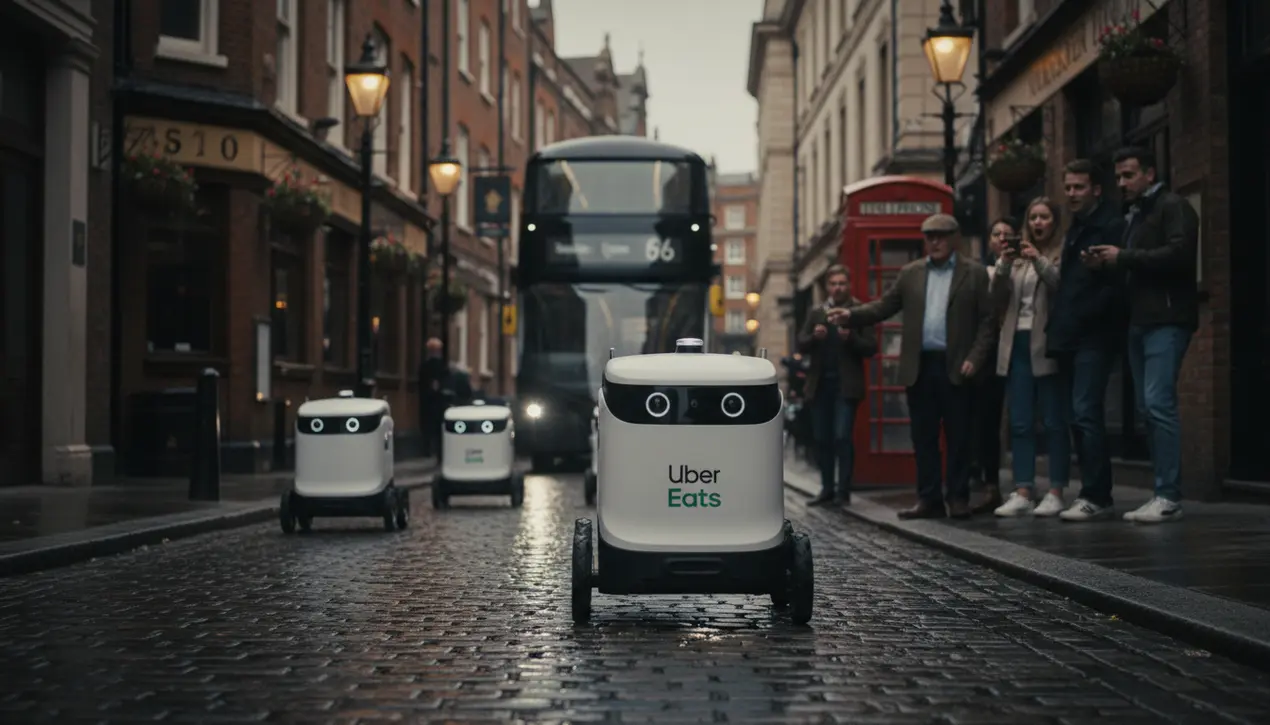
AIroboticsAutonomous Navigation
Uber Eats Partners with Starship for UK Robot Deliveries
AN
Andrew Blake
6 days ago7 min read8 comments
The familiar whirr of a delivery scooter might soon be joined by a new, more diminutive sound on British pavements: the quiet hum of an autonomous robot. In a move that feels ripped from a near-future sci-fi novel, Uber Eats has inked a partnership with robotics company Starship Technologies to launch a fleet of delivery robots in the UK later this year, with ambitious plans to colonize other European cities by 2026 and make a transatlantic leap to the U.S. in 2027.This isn't just a quirky pilot program; it's a strategic gambit in the high-stakes race to own the 'last mile' of commerce, a logistical puzzle that has bedeviled retailers and tech giants alike. For Starship, a company founded by the same minds that brought us Skype, this is a massive validation and scaling opportunity, leveraging Uber's vast user base and brand recognition.For Uber Eats, it’s a multi-pronged solution to some of its most persistent operational headaches. Think about it: these six-wheeled couriers don’t demand minimum wage, don’t call in sick, don’t get stuck in traffic jams, and are immune to the fatigue that can plague human gig workers.The economic calculus is undeniable, especially in a post-pandemic world where delivery demand has skyrocketed but profit margins remain razor-thin. But the rollout will be anything but straightforward.The UK, as the initial testing ground, presents a fascinating laboratory. Its dense, historic city centers with narrow, cobbled streets are a world away from the wide, planned suburbs of an American city like Phoenix, where similar trials have occurred.The success of these robots hinges on a complex dance of technology and social acceptance. They must navigate not just physical obstacles—kerbs, potholes, unpredictable pedestrians—but also a thicket of local regulations and by-laws.Councils across Britain will be grappling with questions they never anticipated: Who is liable if a robot accidentally trips an elderly person? What are the rules for parking these devices on public footpaths? And let's not forget the human element; the sight of a convoy of cooler-sized robots trundling past a traditional pub is a potent symbol of the cultural disruption this technology represents. There's also the inevitable impact on the existing workforce.While Uber is quick to frame this as a supplement, not a replacement, for human couriers, the long-term trajectory is clear. This partnership accelerates the automation of a sector that currently employs hundreds of thousands.The political and social ramifications of that shift will be profound, echoing the debates that surrounded the automation of manufacturing. Yet, for all the challenges, the potential is staggering.Beyond just delivering takeaway, these robots could revolutionize local commerce, offering small independent shops a low-cost delivery option they could never afford with human drivers. They could operate 24/7, bringing a forgotten phone charger or a bottle of medicine in the middle of the night with an efficiency no human-based system can match.The data collected from millions of daily pedestrian-level journeys will be a goldmine for urban planners and AI researchers alike. This partnership between a delivery titan and a robotics pioneer is more than a business deal; it's a live experiment in how we will share our cities with intelligent machines. The journey from a short press release to a robot knocking on your door is fraught with technical, legal, and ethical hurdles, but the wheels, quite literally, are now in motion.
#Uber Eats
#Starship Technologies
#robot delivery
#food delivery
#autonomous vehicles
#UK expansion
#featured
Stay Informed. Act Smarter.
Get weekly highlights, major headlines, and expert insights — then put your knowledge to work in our live prediction markets.
Related News
Comments
Loading comments...
© 2025 Outpoll Service LTD. All rights reserved.